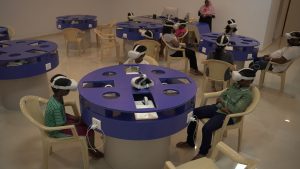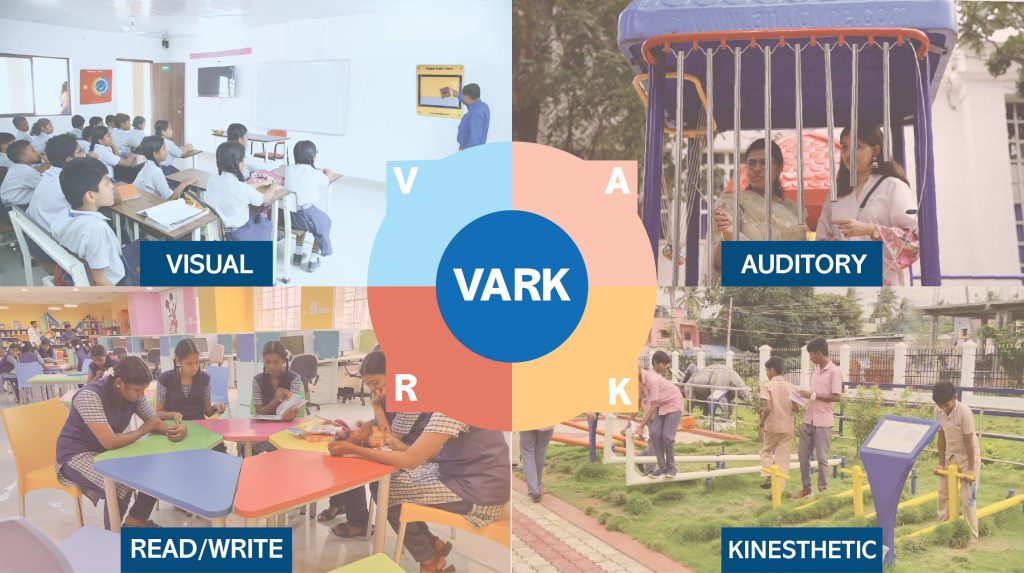Is your teaching reaching every student?
Every classroom is a mix of learners with different styles of understanding and retaining information. Yet, many educators follow a one-size-fits-all approach. To create an inclusive and effective learning environment, it’s important to identify and support different learning styles.
Balancing the student-teacher ratio is crucial because individual assessments play a vital role in a teacher’s evaluation process. To make an impact truly, teachers must identify how each student learns best and tailor their pedagogy accordingly.
Start by assessing students for:
✔️ Their learning style (visual, auditory, read/write, or kinesthetic)
✔️ Grasping power (how quickly they absorb concepts)
✔️ Retention levels (how well they remember what they learn)
Once you have insights into their learning preferences, you can design your curriculum to accommodate multiple levels and allow students to engage in ways that work best for them.
How to Cater to Different Learning Styles?
The VARK Model is here to help educators tailor their teaching strategies to support diverse learners.
🔹 Visual Learners 👀
These students understand best when they see concepts in action.
They prefer a demonstration of a concept in front of them to understand or complete a task effectively.
📌 Pedagogy: Teach using spatial elements like colors, charts, and symbols.
📌 Resources to Support:
✔️ Put up visual aids like charts, graphs, and infographics on classroom walls in an engaging and vibrant way. When students observe them daily, they subconsciously retain the information.
✔️ Incorporate videos, demonstrations, and interactive presentations in lessons.
📌 Assessment: Assess their understanding through mind maps and drawings so they can present ideas in a visually stimulating manner.

🔹 Auditory Learners 🎧
Listening and verbal engagement help aural learners retain concepts better through active listening.
📌 Pedagogy: Explain aloud, use discussions, and provide audio materials.
📌 Resources to Support:
✔️ Record audiobooks for homework to help students review lessons at their own pace.
✔️ Use mnemonics or rhymes to help them recall fundamental concepts during exams.
✔️ Conduct group discussions, storytelling, and interactive Q&A sessions on classroom materials.
📌 Assessment: Conduct verbal assessments like role-plays and discussions to reinforce their grasp of the subject.
🔹 Read/Write Learners 📖✍️
Since most traditional curricula is built around this method, many students are familiar with it.
📌 Pedagogy: Focus on structured reading and writing-based learning activities.
📌 Resources to Support:
✔️ Introduce note-taking strategies to make their learning style effective.
✔️ Encourage the use of pen and paper—their best friends for consuming content in class.
✔️ Help them organize information through tables, lists, and structured notes for deeper learning.
📌 Assessment: Written exams work best for assessing their comprehension of classroom readings.
🔹 Kinesthetic Learners 🏃♂️
This is often the most effective style, as hands-on experiences create lasting learning. Most people fall into this category or a combination of this and another style.
📌 Pedagogy: Provide experiential, hands-on, and movement-based learning opportunities.
📌 Resources to Support:
✔️ They prefer physical experiences, so provide resources that support experiential learning.
✔️ Science Parks are the best solution for these learners. They can move around, touch, feel, and engage in learning through sensory experiences.
📌 Assessment: Assign hands-on activities during assessments that allow them to interact with concepts.
A Blended Approach for Every Child
Be ready with a variety of resources in your curriculum to support every student in their learning process. When learning is accessible in different ways, no child gets left behind.
Teachers, which learning style do you see most in your students? Share your insights below! 👇

